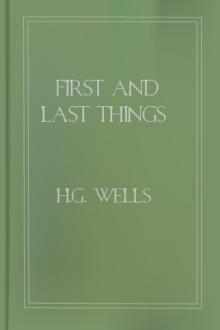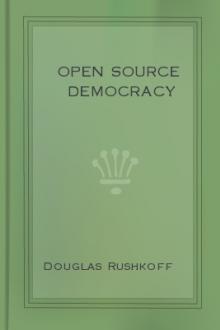The Library, Andrew Lang [online e book reading txt] 📗

- Author: Andrew Lang
- Performer: -
Book online «The Library, Andrew Lang [online e book reading txt] 📗». Author Andrew Lang
“Finito libro vivamus semper in Christo -
Si semper in Christo carebimus ultimo leto.
Explicit Deo gratias; Amen. Stephanus de Tantaldis scripsit in pergamo.”
2. The “Psalter” of the thirteenth century is usually to be considered a forerunner of the “Book of Hours.” It always contains, and usually commences with, a Calendar, in which are written against certain days the “obits” of benefactors and others, so that a well-filled Psalter often becomes a historical document of high value and importance. The first page of the psalms is ornamented with a huge B, which often fills the whole page, and contains a representation of David and Goliath ingeniously fitted to the shape of the letter.
At the end are usually to be found the hymns of the Three Children, and others from the Bible together with the Te Deum; and sometimes, in late examples, a litany. In some psalters the calendar is at the end. These Psalters, and the Bibles described above, are very frequently of English work; more frequently, that is, than the books of Hours and Missals. The study of the Scriptures was evidently more popular in England than in the other countries of Europe during the Middle Ages; and the early success of the Reformers here, must in part, no doubt, be attributed to the wide circulation of the Bible even before it had been translated from the Latin. I need hardly, perhaps, observe that even fragments of a Psalter, a Testament, or a Bible in English, are so precious as to be practically invaluable.
3. We are indebted to Sir W. Tite for the following collation of a Flemish “Book of Hours”:-
1. The Calendar.
2. Gospels of the Nativity and the Resurrection.
3. Preliminary Prayers (inserted occasionally).
4. Horae—(Nocturns and Matins).
5. (Lauds).
6. (Prime).
7. (Tierce).
8. (Sexte).
9. (None).
10. (Vespers).
11. (Compline).
12. The seven penitential Psalms
13. The Litany.
14. Hours of the Cross.
15. Hours of the Holy Spirit.
16. Office of the Dead.
17. The Fifteen Joys of B. V. M.
18. The seven requests to our Lord.
19. Prayers and Suffrages to various Saints.
20. Several prayers, petitions, and devotions.
This is an unusually full example, but the calendar, the hours, the seven psalms, and the litany, are in almost all the MSS. The buyer must look carefully to see that no miniatures have been cut out; but it is only by counting the leaves in their gatherings that he can make sure. This is often impossible without breaking the binding.
The most valuable “Horae” are those written in England. Some are of the English use (Sarum or York, or whatever it may happen to be), but were written abroad, especially in Normandy, for the English market. These are also valuable, even when imperfect. Look for the page before the commencement of the Hours (No. 4 in the list above), and at the end will be found a line in red,—“Incipit Horae secundum usum Sarum,” or otherwise, as the case may be.
4. Missals do not often occur, and are not only very valuable but very difficult to collate, unless furnished with catchwords or signatures. But no Missal is complete without the Canon of the Mass, usually in the middle of the book, and if there are any illuminations throughout the volume, there will be a full page Crucifixion, facing the Canon. Missals of large size and completeness contain—(1) a Calendar; (2) “the proper of the Season;” (3) the ordinary and Canon of the Mass; (4) the Communal of Saints; (5) the proper of Saints and special occasions; (6) the lessons, epistles, and gospels; with (7) some hymns, “proses,” and canticles. This is Sir W. Tite’s list; but, as he remarks, MS.
Missals seldom contain so much. The collector will look for the Canon, which is invariable.
Breviaries run to an immense length, and are seldom illuminated. It would be impossible to give them any kind of collation, and the same may be said of many other kinds of old service-books, and of the chronicles, poems, romances, and herbals, in which mediaeval literature abounded, and which the collector must judge as best he can.
The name of “missal” is commonly and falsely given to all old service-books by the booksellers, but the collector will easily distinguish one when he sees it, from the notes I have given. In a Sarum Missal, at Alnwick, there is a colophon quoted by my lamented friend Dr. Rock in his “Textile Fabrics.” It is appropriate both to the labours of the old scribes and also to those of their modern readers:-
“Librum Scribendo—Jon Whas Monachus laborabat -
Et mane Surgendo—multum corpus macerabat.”
It is one of the charms of manuscripts that they illustrate, in their minute way, all the art, and even the social condition, of the period in which they were produced. Apostles, saints, and prophets wear the contemporary costume, and Jonah, when thrown to the hungry whale, wears doublet and trunk hose. The ornaments illustrate the architectural taste of the day. The backgrounds change from diapered patterns to landscapes, as the modern way of looking at nature penetrates the monasteries and reaches the scriptorium where the illuminator sits and refreshes his eyes with the sight of the slender trees and blue distant hills. Printed books have not such resources. They can only show varieties of type, quaint frontispieces, printers’ devices, and fleurons at the heads of chapters. These attractions, and even the engravings of a later day, seem meagre enough compared with the allurements of manuscripts. Yet printed books must almost always make the greater part of a collection, and it may be well to give some rules as to the features that distinguish the productions of the early press.
But no amount of “rules” is worth six months’ practical experience in bibliography. That experience the amateur, if he is wise, will obtain in a public library, like the British Museum or the Bodleian.
Nowhere else is he likely to see much of the earliest of printed books, which very seldom come into the market.
Those of the first German press are so rare that practically they never reach the hands of the ordinary collector. Among them are the famous Psalters printed by Fust and Schoffer, the earliest of which is dated 1457; and the bible known as the Mazarine Bible. Two copies of this last were in the Perkins sale. I well remember the excitement on that occasion. The first copy put up was the best, being printed upon vellum. The bidding commenced at 1000 pounds, and very speedily rose to 2200 pounds, at which point there was a long pause; it then rose in hundreds with very little delay to 3400
pounds, at which it was knocked down to a bookseller. The second copy was on paper, and there were those present who said it was better than the other, which had a suspicion attaching to it of having been “restored” with a facsimile leaf. The first bid was again 1000 pounds, which the buyer of the previous copy made guineas, and the bidding speedily went up to 2660 pounds, at which price the first bidder paused. A third bidder had stepped in at 1960 pounds, and now, amid breathless excitement, bid 10 pounds more. This he had to do twice before the book was knocked down to him at 2690 pounds.
A scene like this has really very little to do with book-collecting.
The beginner must labour hard to distinguish different kinds of printing; he must be able to recognise at a glance even fragments from the press of Caxton. His eye must be accustomed to all the tricks of the trade and others, so that he may tell a facsimile in a moment, or detect a forgery.
But now let us return to the distinctive marks of early printed books. The first is, says M. Rouveyre, -
1. The absence of a separate title-page. It was not till 1476-1480
that the titles of books were printed on separate pages. The next mark is -
2. The absence of capital letters at the beginnings of divisions.
For example, in an Aldine Iliad, the fifth book begins thus -
[Greek text]
It was intended that the open space, occupied by the small epsilon ([epsilon symbol]), should be filled up with a coloured and gilded initial letter by the illuminator. Copies thus decorated are not very common, but the Aldine “Homer” of Francis I., rescued by M.
Didot from a rubbish heap in an English cellar, had its due illuminations. In the earliest books the guide to the illuminator, the small printed letter, does not appear, and he often puts in the wrong initial.
3. Irregularity and rudeness of type is a “note” of the primitive printing press, which very early disappeared. Nothing in the history of printing is so remarkable as the beauty of almost its first efforts. Other notes are -
4. The absence of figures at the top of the pages, and of signatures at the foot. The thickness and solidity of the paper, the absence of the printer’s name, of the date, and of the name of the town where the press stood, and the abundance of crabbed abbreviations, are all marks, more or less trustworthy, of the antiquity of books. It must not be supposed that all books published, let us say before 1500, are rare, or deserve the notice of the collector. More than 18,000 works, it has been calculated, left the press before the end of the fifteenth century. All of these cannot possibly be of interest, and many of them that are “rare,” are rare precisely because they are uninteresting. They have not been preserved because they were thought not worth preserving. This is a great cause of rarity; but we must not hastily conclude that because a book found no favour in its own age, therefore it has no claim on our attention. A London bookseller tells me that he bought the “remainder” of Keats’s “Endymion” for fourpence a copy! The first edition of “Endymion” is now rare and valued. In trying to mend the binding of an old “Odyssey” lately, I extracted from the vellum covers parts of two copies of a very scarce and curious French dictionary of slang, “Le Jargon, ou Langage de l’Argot Reforme.” This treatise may have been valueless, almost, when it appeared, but now it is serviceable to the philologist, and to all who care to try to interpret the slang ballades of the poet Villon. An old pamphlet, an old satire, may hold the key to some historical problem, or throw light on the past of manners and customs. Still, of the earliest printed books, collectors prefer such rare and beautiful ones as the oldest printed Bibles: German, English,—as Taverner’s and the Bishop’s,—or Hebrew and Greek, or the first editions of the ancient classics, which may contain the readings of MSS. now lost or destroyed.
Talking of early Bibles, let us admire the luck and prudence of a certain Mr. Sandford. He always longed for the first Hebrew Bible, but would offer no fancy price, being convinced that the book would one day fall in his way. His foreboding was fulfilled, and he picked up his treasure for ten shillings in a shop in the Strand.
The taste for incunabula, or very early printed books, slumbered in the latter half of the sixteenth, and all the seventeenth century.
It revived with the third jubilee of printing in 1740, and since then has refined itself, and only craves books very early, very important, or works from the press of Caxton, the St. Albans Schoolmaster, or other famous old artists. Enough has been said to show





Comments (0)